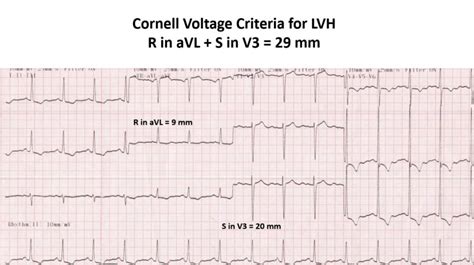lvh strain pattern Right ventricular strain pattern = ST depression / T wave inversion in the . Century Arms Draco 7.62x39mm AK47 Pistol. (1) Magazine. Owner's Manual. The Draco is a semi-automatic pistol designed for sporting use, and has inspiration of the famous AK-47 rifle. Featuring double locking lugs, unlocking raceway, and trigger mechanism are clearly derived from the earlier American M1 Garand Rifle.You are most likely experiencing this. Try running: dracut --regenerate-all -f && grub2-mkconfig -o /boot/grub2/grub.cfg. This will rebuild initramfs and solve naming issues in block devices ( /dev/sda1 might now be /dev/xvde1 or something similar).
0 · my lvhn sign in
1 · minimum voltage criteria for lvh
2 · lvh with strain pattern meaning
3 · lvh with strain ekg
4 · lvh with repol abnormality
5 · lvh strain pattern vs ischemia
6 · lvh ecg criteria by age
7 · criteria for lvh on ekg
Find out more about the Drapion LV.X (123/127) Pokemon card from the Platinum set.Drapion LV. X 123/127 | Platinum | Ultra Rare | 2009 | Pokemon TCG 123/127 [eBay] $18.00: 2021-07-07

my lvhn sign in
Left ventricular hypertrophy (LVH): Markedly increased LV voltages: huge precordial R and S waves that overlap with the adjacent leads (SV2 + RV6 >> 35 mm). R-wave peak time > 50 ms in V5-6 with associated QRS broadening. LV strain pattern with ST .RWPT in wide QRS complex tachycardia. R-wave peak time (RWPT) may be .Right ventricular strain pattern = ST depression / T wave inversion in the .ECG Criteria for Left Atrial Enlargement. LAE produces a broad, bifid P wave in .
References. Da Costa D, Brady WJ, Edhouse J. Bradycardias and .References. Sovari AA, Farokhi F, Kocheril AG. Inverted U wave, a specific .Left Axis Deviation = QRS axis less than -30°.. Normal Axis = QRS axis between .
Learn how to identify LVH on ECG based on various indexes and secondary ST-T changes. Find out the causes, clinical characteristics and treatment of LVH and its complications. LVH with strain pattern can sometimes be seen in long standing severe aortic regurgitation, usually with associated left ventricular hypertrophy and systolic dysfunction. The sensitivity of LVH strain pattern on ECG as a .Electrocardiographic (ECG) left ventricular hypertrophy (LVH) with strain pattern is said to be present when, apart from the voltage criterion for ECG-LVH, there is also a downsloping . Left ventricular hypertrophy (LVH) refers to an increase in the size of myocardial fibers in the main cardiac pumping chamber. Such hypertrophy is usually the response to a .
In electrocardiography, a strain pattern is a well-recognized marker for the presence of anatomic left ventricular hypertrophy (LVH) in the form of ST depression and T wave inversion on a . Left ventricular hypertrophy, or LVH, is a term for a heart’s left pumping chamber that has thickened and may not be pumping efficiently. Sometimes problems such as aortic stenosis or high blood pressure overwork . To diagnose left ventricular hypertrophy, a healthcare professional does a physical exam and asks questions about your symptoms and family's health history. The care .
Left ventricular hypertrophy commonly occurs in heart diseases that also cause intraventricular conduction defects or delays (IVCDs). As both LVH and IVCDs alter QRS . To diagnose left ventricular hypertrophy, a healthcare professional does a physical exam and asks questions about your symptoms and family's health history. The care professional checks your blood pressure and listens to your heart with a device called a stethoscope. Tests. Tests used to diagnose left ventricular hypertrophy may include:
The strain pattern in the 12‐lead ECG, defined as ST‐segment depression and T‐wave inversion, represents ventricular repolarization abnormalities. 1 The mechanism underlying ECG strain is unclear, although it .
Left Ventricular Hypertrophy with Strain Pattern ECG (Example 1 .

This is because LVH causes ST depression in leads with upr ight QRS complexes, and reciprocal ST elevation in leads with negative QRS complexes. This is called ST segment discordance. The ST changes in LVH are due to the "strain" pattern, indicating strain on the left ventricular myocardium.
The classic left ventricular (LV) strain pattern of ST segment depression and T-wave inversion on the left precordial leads of the standard resting ECG is a well-known marker of the presence of anatomic LV hypertrophy (LVH). 1–6 Furthermore, the occurrence of this electrocardiographic abnormality of ventricular repolarization has been associated with a . Left ventricular hypertrophy (LVH) is a condition in which there is an increase in left ventricular mass, either due to an increase in wall thickness or due to left ventricular cavity enlargement, or both. Most commonly, the left ventricular wall thickening occurs in response to pressure overload, and chamber dilatation occurs in response to the volume overload.[1] Electrocardiographic left ventricular hypertrophy (LVH) has many faces with countless features. Beyond the classic measures of LVH, including QRS voltage and duration, the left ventricular (LV) strain pattern is an element whereby characteristic R-ST depression is followed by a concave ST segment that ends in an asymmetrically inverted T wave. Interpretation: Normal sinus rhythm at 85 beats per minute, diffuse ST-segment depression and T-wave inversion, consider acute ischemia, left ventricular hypertrophy (LVH) with strain pattern. The ST-segment depression and T-wave inversion present in the inferior (II, III, aVF) and the anterolateral (V 3 through V 6 ) leads suggest non-ST .
Left Ventricular Hypertrophy With Strain Pattern (Example 3)
minimum voltage criteria for lvh
Introduction. The strain pattern in the 12‐lead ECG, defined as ST‐segment depression and T‐wave inversion, represents ventricular repolarization abnormalities.1 The mechanism underlying ECG strain is unclear, although it has been proposed as subendocardial ischemia.2, 3 ECG strain is associated with concentric left ventricular (LV) hypertrophy (LVH), .Left ventricular hypertrophy affects an estimated 15% to 20% of the population — nearly 1 in 5 people. You may have an increased risk of LVH if you have high blood pressure or have obesity, are elderly or Black. How serious is left ventricular hypertrophy? Left ventricular hypertrophy usually occurs as a result of other heart problems.
The classic ECG strain pattern, ST depression and T-wave inversion, is a marker for left ventricular hypertrophy (LVH) and adverse prognosis. However, the independence of the relation of strain to increased LV mass from its . Despite substantial advances in the imaging techniques and pathophysiological understanding over the last decades, identification of the underlying causes of left ventricular hypertrophy by means of echocardiographic examination remains a challenge in current clinical practice. The longitudinal strain bull’s eye plot derived from 2D speckle tracking imaging offers . It is now appreciated that electrocardiographic LVH with ST-segment and T-wave abnormalities occurs in conditions that are not necessarily caused by increased hemodynamic work, as in patients with dilated or hypertrophic cardiomyopathies, and that lesser degrees of ST-T abnormalities than the “typical strain” pattern are associated with LVH.The ECG criteria for diagnosing right or left ventricular hypertrophy are very insensitive . (i.e., left ventricular strain pattern, or ST-T oriented opposite to QRS direction) Leftward shift in frontal plane QRS axis ; . May see .
Background: Electrocardiographic left ventricular hypertrophy with strain pattern has been documented as a marker for left ventricular hypertrophy. Its presence on the ECG of hypertensive patients is associated with a poor prognosis. This review was undertaken to report the prevalence, mechanism and prognostic implications of this ECG abnormality.Strain pattern. When LVH is associated with other pathology, such as hypertension or aortic stenosis, a ‘strain pattern’ is often seen: ST depression + flipped asymmetric T wave; ST elevation + upright asymmetric T wave; The . The Cornell criteria involve measuring the S wave in lead V3 and the R wave in lead aVL. Left ventricular hypertrophy is indicated by a sum of >28 mm in men and >20 mm in women. The Romhilt–Estes scoring system allocates points for the presence of certain criteria. A score of 5 indicates left ventricular hypertrophy and a score of 4 indicates probable left .
Left ventricular hypertrophy, or LVH, is a term for a heart’s left pumping chamber that has thickened and may not be pumping efficiently. Sometimes problems such as aortic stenosis or high blood pressure overwork the heart muscle. In response to this pressure overload, the inner walls of the heart may respond by getting thicker. The patient had severe concentric LVH by echo, but no ECG voltage criteria for LVH. This ECG* demonstrates a strain pattern isolated to V5 and V6. In addition, classic voltage criteria for LVH are present—Cornell criteria >28 mm in RaVL (19 mm) and S V3 12 mm—along with left axis deviation and left atrial enlargement, fulfilling Romhilt . Right ventricular strain pattern = ST depression / T wave inversion in the right precordial (V1-4) and inferior (II, III, aVF) leads. . Left ventricular hypertrophy. References. Harrigan RA, Jones K. ABC of clinical electrocardiography. Conditions affecting the right side of the heart. BMJ. 2002 May 18;324(7347):1201-4.
LV strain pattern is defined as downsloping ST-segment depression and asymmetrically inverted T-wave with polarity opposite the main QRS deflection in leads V5 and V6 and is a marker of anatomic LVH [8, 26]. The pathogenetic mechanism of ECG strain is not clearly understood.
Posted in Uncategorized | Tagged ascending limb of t wave, asymmetrical t waves, deep t waves, ECG, j point depression, lv strain pattern, lv voltage criteria, lvh, lvh vs ischemia, overshooting og t waves, primary vs secondary st t, st depression, st segment, symmetrical t wave inversion, T WAVE INVERSION, t wave inversion 3mm, v6 t > v3 t . Electrocardiographic left ventricular hypertrophy (LVH) has many faces with countless features. Beyond the classic measures of LVH, including QRS voltage and duration, the left ventricular (LV) strain pattern is an element whereby characteristic R-ST depression is followed by a concave ST segment that ends in an asymmetrically inverted T wave. Background—ECG left ventricular hypertrophy with strain is associated with an adverse prognosis in aortic stenosis. We investigated the mechanisms and outcomes associated with ECG strain. Methods and Results—One hundred and two patients (age, 70 years [range, 63–75 years]; male, 66%; aortic valve area, 0.9 cm2 [range, 0.7–1.2 cm2]) underwent ECG, . The usual pattern of strain bull’s eye plot in Fabry patients is a slightly reduced average global longitudinal strain despite normal . Maron BJ. Phenotypic spectrum and patterns of left ventricular hypertrophy in hypertrophic cardiomyopathy: morphologic observations and significance as assessed by two-dimensional echocardiography in 600 .
Left ventricular hypertrophy (LVH) doesn’t usually cause symptoms at first, but when symptoms do occur, they often mirror those in conditions such as heart failure. A physical exam and cardiac .

saumur lv bag
Dr L Jedeikin. Address: Pinelands, Western Cape, 7405, South Africa. City of Cape Town. Phone number: 021 531 7261. Categories: Paediatrics, 6 Reviews. ( 3 / 5 ) Paediatrics. Dr Ps Hartley. Address: 11 Glenugie Ave, Tokai, Western Cape, 7945, South Africa, Cape Town. See full address and map. Categories: Paediatrics. Dr Af Malan.
lvh strain pattern|criteria for lvh on ekg



























